- Benefits of Growing Tomatoes from Seeds
- Cost-effective way
- Variety of tomato types
- Controlling the Growth Process
- 1. Pruning and Training
- 2. Watering
- 3. Fertilizing
- 4. Mulching
- 5. Pest and Disease Control
- 6. Harvesting
- Choosing the Right Tomato Seeds
- 1. Tomato Varieties
- 2. Growth Habit
- 3. Disease Resistance
- 4. Climate Suitability
- 5. Seed Source
- 6. Organic or Non-Organic
- Determining the growing zone
- Why is the growing zone important?
- How to determine your growing zone?
- Understanding your growing zone
- Considering the climate and weather
- Temperature
- Frost
- Rainfall
- Wind
- Sourcing quality tomato seeds
- 1. Seed catalogs
- 2. Local nurseries and garden centers
- 3. Online seed suppliers
- 4. Seed swaps and gardening communities
- 5. Saving seeds from previous harvests
- Preparing Your Vegetable Garden for Tomato Seeds
- 1. Choose the Right Location
- 2. Clear the Area
- 3. Test and Amend the Soil
- 4. Create Raised Beds or Rows
- 5. Provide Support
- 6. Clean and Sterilize Garden Tools
- 7. Plan for Watering
- Selecting a Suitable Location
- “Question-Answer”
- What is the best time to start growing tomatoes from seeds?
- Can I use store-bought tomatoes for seed saving?
- What kind of soil should I use for planting tomato seeds?
- How often should I water tomato seeds?
- When can I transplant my tomato seedlings into the garden?
- “Video” How to Grow Tomatoes from Seed (Updated 2021 with Results)
Growing tomatoes from seeds in your vegetable garden can be a rewarding and satisfying experience. Tomatoes are one of the most popular vegetables to grow, whether you have a large backyard or a small balcony. Not only do they provide fresh and delicious fruit, but they can also add beauty and color to your garden.
Before you start planting tomato seeds, it’s important to choose the right variety for your garden. Determinate varieties are compact and bushy, making them ideal for containers or small spaces. Indeterminate varieties are taller and require staking or caging for support. They produce fruit throughout the season.
Once you’ve decided on the tomato variety, it’s time to start germinating the seeds. Fill a seed tray with seed compost and place a few seeds in each cell. Cover the seeds lightly with more compost and water gently. Place the tray in a warm and sunny spot, such as a windowsill. Keep the soil moist but not waterlogged, and within a couple of weeks, you should see the seeds sprout.
After the seedlings have grown their first set of true leaves, it’s time to transplant them into individual pots. Fill pots with potting soil and carefully remove the seedlings from the tray, taking care not to damage the delicate roots. Plant each seedling deep into the pot, burying the stem up to its first set of leaves. This will encourage strong root development.
As the plants continue to grow, they will need proper care and maintenance. Water the plants regularly, making sure the soil remains moist but not saturated. Provide support for indeterminate varieties by staking or caging them to prevent them from sprawling on the ground. Remove any side shoots that develop in the leaf axils, as these can drain energy from the main stem.
In addition to proper care, tomatoes also require regular feeding. Use a balanced fertilizer or organic compost to provide the plants with the necessary nutrients. Be careful not to over-fertilize, as this can lead to excessive foliage growth and fewer fruits. Monitor the plants for any signs of pests or diseases and take appropriate action to prevent or treat them.
Grow tomatoes from seeds in your vegetable garden and enjoy the satisfaction of harvesting your own fresh and flavorful tomatoes. With the right variety, proper care, and a little bit of patience, you’ll be able to enjoy a bountiful tomato harvest throughout the growing season.
Benefits of Growing Tomatoes from Seeds
Growing tomatoes from seeds offers several benefits for gardeners. Here are some advantages of starting your tomato plants from seeds:
- Cost-effective: Growing tomatoes from seeds is a cost-effective option compared to buying seedlings from a nursery. Seeds are relatively inexpensive, and you can save money by growing a larger number of plants from a single packet of seeds.
- Greater variety: When you grow tomatoes from seeds, you have access to a wide range of tomato varieties that may not be available as seedlings at your local nursery. This allows you to experiment with different flavors, sizes, and colors to find your favorites.
- Control over quality: By growing tomatoes from seeds, you have complete control over the quality of your plants. You can choose organic, heirloom, or hybrid seeds based on your preferences and gardening practices. This gives you the assurance of knowing exactly what goes into growing your tomatoes.
- Healthier plants: Starting tomatoes from seeds allows you to grow healthier plants. When you raise your seedlings indoors, you can control their growing conditions by providing optimal light, temperature, and moisture levels. This results in stronger and more resilient plants that are better equipped to adapt to outdoor conditions.
- Satisfaction and fulfillment: There is a sense of satisfaction and fulfillment that comes with growing tomatoes from seeds. Starting the process from scratch and nurturing your plants to maturity can be rewarding and provide a sense of accomplishment.
Cost-effective way
Growing tomatoes from seeds in your vegetable garden can be a cost-effective way to enjoy fresh, homegrown tomatoes. Instead of purchasing seedlings from a nursery, you can save money by starting your own plants from seeds.
Here are some ways to save money when growing tomatoes from seeds:
- Collect seeds from ripe tomatoes: Instead of buying tomato seeds, you can save money by collecting seeds from ripe tomatoes that you already have. Simply scoop out the seeds, rinse them, and let them dry before planting.
- Share seeds with fellow gardeners: If you don’t have enough seeds or want to try different varieties, consider swapping seeds with other gardeners. This can be a fun and cost-effective way to expand your tomato collection.
- Start seeds indoors: Starting tomato seeds indoors can help you save money on heating costs. By germinating the seeds in a warm environment, you can ensure a higher success rate and avoid wasting money on seeds that may not sprout in cooler temperatures.
- Reuse containers: Instead of buying expensive seed trays or pots, consider reusing containers from around your home. Egg cartons, yogurt cups, and even toilet paper rolls can all work well for starting tomato seeds. Just make sure to poke drainage holes in the bottom of the containers.
- Make your own potting mix: Buying pre-packaged potting mix can be costly, especially if you have a large garden. Instead, consider making your own mix using a combination of compost, vermiculite, and perlite. This can save you money and give you more control over the quality of the soil.
- Use organic pest control methods: Instead of spending money on chemical pesticides, try using organic pest control methods to protect your tomato plants. Companion planting, using garlic spray, and attracting beneficial insects can all help control pests naturally.
By following these cost-effective tips, you can grow tomatoes from seeds without breaking the bank. Not only will you save money, but you’ll also have the satisfaction of growing your own healthy and delicious tomatoes.
Variety of tomato types
Tomatoes come in various types, each with its own unique characteristics, flavor profiles, and growth habits. Here are some popular tomato varieties that you can consider growing in your vegetable garden:
Cherry tomatoes: These small bite-sized tomatoes are perfect for snacking and adding to salads. They come in a range of colors, including red, yellow, and even green when unripe.
Roma tomatoes: Also known as plum tomatoes, Roma tomatoes are known for their meaty texture and low seed count. They are ideal for making sauces and canning.
Beefsteak tomatoes: These large, juicy tomatoes are perfect for slicing and adding to sandwiches or burgers. They have a rich flavor and meaty texture.
Heirloom tomatoes: Heirloom tomatoes are varieties that have been passed down through generations. They come in a wide range of shapes, sizes, and colors, and are known for their unique flavors and textures.
Determinate tomatoes: These tomato plants have a compact growth habit and produce fruits that ripen all at once. They are great for preserving or making sauces.
Indeterminate tomatoes: Indeterminate tomato plants continue to grow and produce fruit throughout the growing season. They require staking or caging for support and are great for continuous harvesting.
These are just a few examples of the many tomato varieties available. Consider your preferences and gardening goals when choosing the right tomato types for your vegetable garden.
Controlling the Growth Process
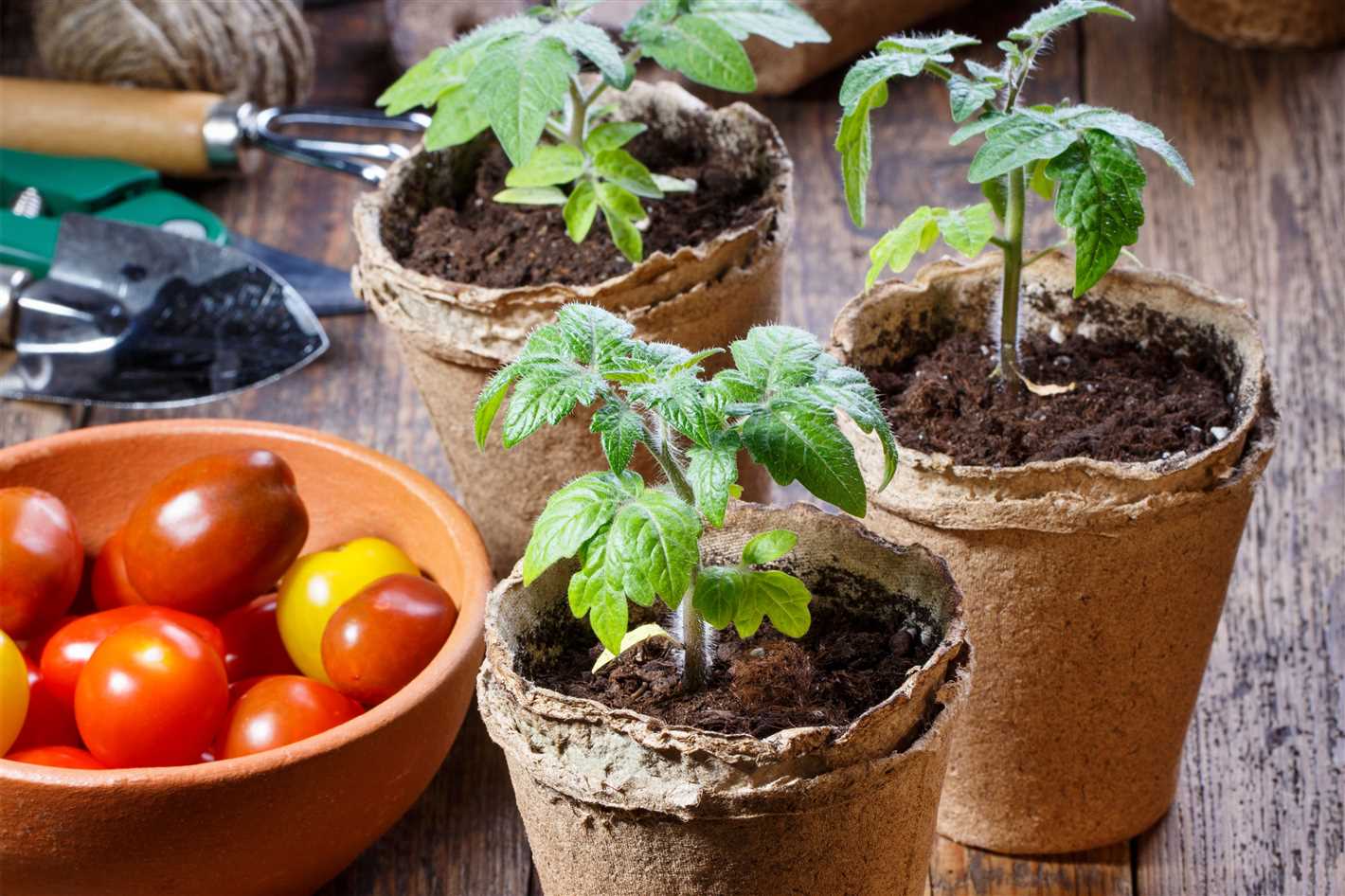
Once you have successfully germinated your tomato seeds and transplanted them into your vegetable garden, it’s important to control the growth process to ensure healthy plants and a bountiful harvest. Here are some tips on how to manage the growth of your tomato plants:
1. Pruning and Training
Tomato plants tend to grow vigorously and can become bushy. To promote better airflow, prevent disease, and improve fruit production, it’s necessary to prune and train your tomato plants. Remove any suckers that appear in the leaf axils, as they can divert energy away from fruit production. Also, use stakes, cages, or trellises to support the plants and keep them growing vertically.
2. Watering
Tomatoes need consistent moisture throughout the growing season, but it’s important not to overwater them. Overwatering can lead to root rot and other diseases. Water your tomato plants deeply once or twice a week, depending on the weather and soil conditions. Water at the base of the plants, avoiding wetting the foliage to prevent fungal diseases.
3. Fertilizing
Provide your tomato plants with regular fertilization to ensure they have the nutrients they need for healthy growth and abundant fruit production. Start by incorporating organic matter, such as compost or well-rotted manure, into the soil before planting. During the growing season, you can also use a balanced fertilizer or a special tomato fertilizer according to the package instructions.
4. Mulching
Applying a layer of organic mulch around your tomato plants can help regulate soil temperature, conserve moisture, and suppress weed growth. Use materials like straw, grass clippings, or wood chips and spread them around the base of the plants. Make sure to keep the mulch a few inches away from the stems to prevent rot.
5. Pest and Disease Control
Monitor your tomato plants regularly for signs of pests or diseases. Common tomato pests include aphids, tomato hornworms, and whiteflies. You can use insecticidal soaps or organic insecticides to control pest populations. For fungal diseases like blight or wilt, choose disease-resistant tomato varieties and ensure good airflow around the plants. Remove any infected leaves or plants to prevent further spread.
6. Harvesting
Harvest your tomatoes when they are fully ripe, as this will ensure the best flavor. Different tomato varieties have varying ripening times, so check the seed packets or plant tags for guidance. When harvesting, gently twist or cut the tomatoes from the vine and handle them carefully to avoid bruising. Enjoy your homegrown tomatoes fresh or use them in various culinary preparations.
| Pruning and Training | Watering | Fertilizing | Mulching | Pest and Disease Control | Harvesting |
|---|---|---|---|---|---|
| Remove suckers and provide support | Water deeply once or twice a week | Use organic matter and balanced fertilizer | Apply organic mulch around plants | Monitor for pests and diseases regularly | Harvest fully ripe tomatoes carefully |
Choosing the Right Tomato Seeds
When it comes to growing tomatoes from seeds in your vegetable garden, selecting the right tomato seeds is crucial. With so many varieties available, making the right choice will determine the success of your crop. Here are some factors to consider when choosing tomato seeds:
1. Tomato Varieties
There are numerous tomato varieties, each with its own unique characteristics. Consider what you want from your tomatoes, such as flavor, size, shape, or specific uses like slicing, canning, or making sauces. Some popular tomato varieties include Beefsteak, Cherry, Roma, and Heirloom tomatoes.
2. Growth Habit
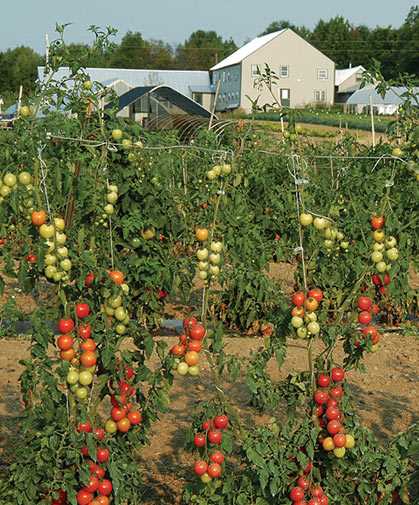
Tomatoes can have different growth habits, which can impact how they perform in your garden. Determinate varieties are more compact and suitable for smaller spaces. They typically produce fruit all at once, making them great for canning or preserving. Indeterminate varieties are vining and continue to grow and produce fruit throughout the growing season. These varieties require staking or trellising to support their growth.
3. Disease Resistance
Diseases can be a common issue when growing tomatoes, and certain varieties have built-in resistance to specific diseases. Look for seeds labeled as disease-resistant to improve your chances of successfully growing healthy tomato plants.
4. Climate Suitability
Consider the climate and growing conditions in your area when selecting tomato seeds. Some varieties are better suited for cooler climates, while others thrive in hot and humid conditions. Choosing seeds that are adapted to your local climate will increase the likelihood of a successful harvest.
5. Seed Source
Ensure that you are purchasing seeds from a reputable source. Look for companies or suppliers that specialize in vegetable seeds and have positive reviews from other gardeners. Choosing high-quality seeds will give you the best chance of success in growing healthy tomato plants.
6. Organic or Non-Organic
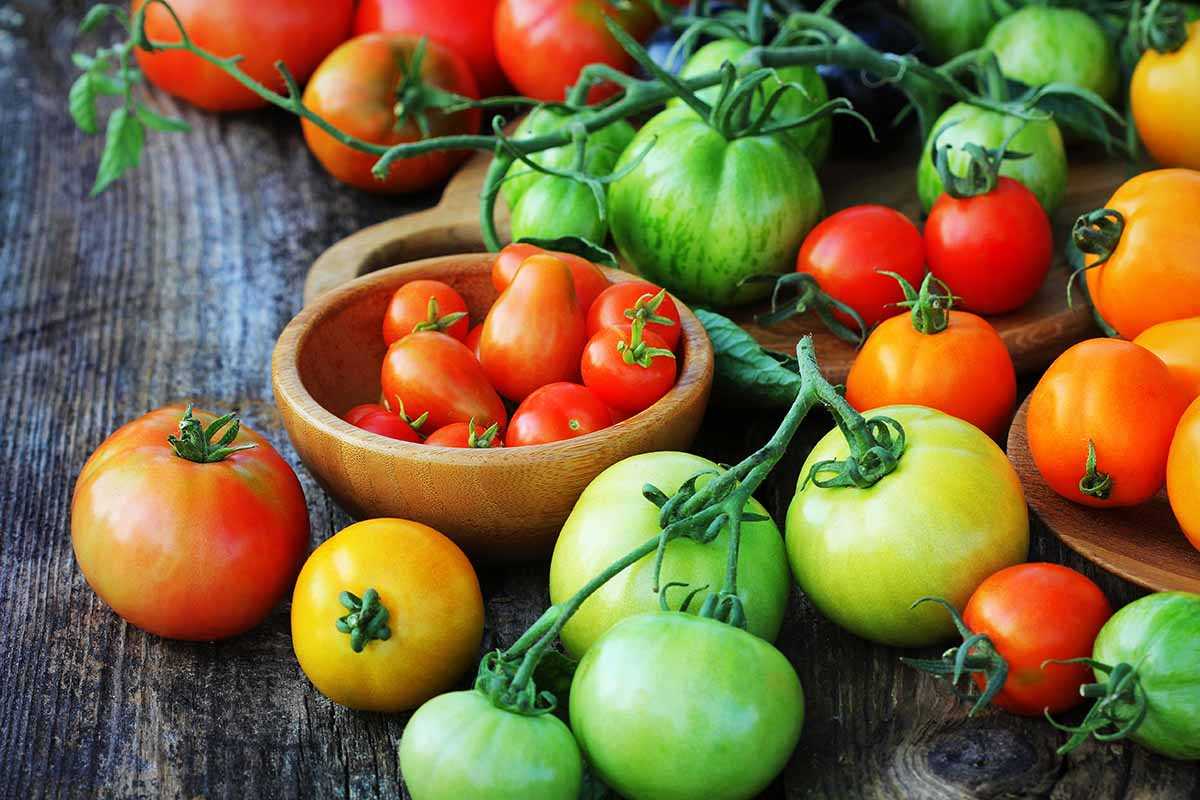
Decide whether you want to grow organic or non-organic tomatoes. Organic seeds are produced without the use of synthetic chemicals, while non-organic seeds may have been treated with pesticides or other chemicals. Consider your personal preferences and gardening practices when making this decision.
By considering these factors and selecting the right tomato seeds, you can set yourself up for a successful tomato-growing season in your vegetable garden.
Determining the growing zone
Determining the appropriate growing zone for your vegetable garden is an essential first step when it comes to growing tomatoes from seeds. The growing zone is determined by your geographical location and provides valuable information about the average climatic conditions in your area. This information can help you select the right varieties of tomatoes that will thrive in your specific climate.
Why is the growing zone important?
The growing zone helps you understand the average temperatures, frost dates, and the length of your growing season. This information is crucial when it comes to selecting the appropriate tomato varieties and planning your planting and harvest dates. Different tomato varieties have specific temperature requirements and can tolerate different levels of frost. By knowing your growing zone, you can avoid planting tomatoes that are not suitable for your climate and maximize your chances of a successful harvest.
How to determine your growing zone?
To determine your growing zone, you can use the USDA Hardiness Zone Map or consult local gardening resources. The USDA Hardiness Zone Map divides North America into 13 different zones based on the average minimum winter temperatures. You can find this map online or at your local gardening center. Simply locate your area on the map, and you will be able to identify your specific growing zone.
In addition to the USDA Hardiness Zone Map, you can also consult local gardening resources such as agricultural extension offices, gardening clubs, or experienced local gardeners. They often have valuable knowledge about the specific growing conditions in your area and can provide guidance on the appropriate tomato varieties for your growing zone.
Understanding your growing zone
Once you determine your growing zone, it is important to understand the characteristics of your specific zone. Some zones have shorter growing seasons and cooler temperatures, while others have longer growing seasons and warmer climates. This knowledge will help you select tomato varieties that are well-suited to your zone and maximize your chances of a bountiful tomato harvest.
Knowing your growing zone is a crucial step in successfully growing tomatoes from seeds. By understanding the average climatic conditions in your area, you can select the right tomato varieties and plan your planting and harvesting dates accordingly. This knowledge will increase your chances of a successful vegetable garden and allow you to enjoy home-grown tomatoes throughout the growing season.
Considering the climate and weather
When starting a vegetable garden, it is important to consider the climate and weather conditions of your region, as this can significantly impact the growth and success of your tomato plants.
Temperature
Tomatoes are warm-season plants and thrive in temperatures between 70 and 85 degrees Fahrenheit (21-29 degrees Celsius). If the temperatures consistently go above or below this range, it can affect the growth of your tomato plants.
If you live in an area with cooler temperatures, you can start your tomato seeds indoors before transferring them to your vegetable garden once the weather warms up. This will give them a head start and ensure that they are established before any potential cold spells.
On the other hand, if you live in a region with very hot summers, it’s important to choose heat-tolerant tomato varieties and provide shade or protection from extreme heat during the peak summer months.
Frost
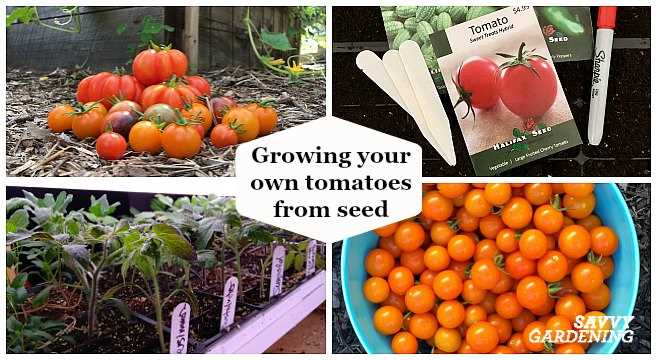
Tomatoes are extremely sensitive to frost and can be damaged or killed if exposed to temperatures below 32 degrees Fahrenheit (0 degrees Celsius). Frost can occur in early spring or late fall, depending on your region.
If you plan to grow tomatoes from seeds, it is recommended to wait until after the last frost date in your area before planting them directly in the garden. Alternatively, you can start your seeds indoors and transplant them once the danger of frost has passed.
Additionally, be prepared to protect your tomato plants from unexpected late frosts by covering them with frost blankets or using other methods of frost protection.
Rainfall
Tomatoes require well-drained soil and prefer consistent moisture levels. However, excessive rainfall can lead to waterlogged soil, which can be detrimental to the plants.
If you live in an area with high rainfall, it is crucial to ensure proper drainage in your garden beds or consider planting your tomatoes in raised beds or containers. This will help prevent water from pooling around the roots and causing root rot.
Conversely, if you live in a region with low rainfall, you will need to supplement irrigation to ensure your tomato plants receive adequate moisture. Using drip irrigation or soaker hoses can help deliver water directly to the roots while minimizing water waste.
Wind
Strong winds can damage tomato plants, causing them to break or uproot. If you live in an area prone to strong winds, it is advisable to provide some form of wind protection for your plants.
You can create windbreaks using fences, trellises, or planting taller crops nearby to create a barrier. This will help protect your tomato plants from the damaging effects of strong winds.
By considering the climate and weather conditions of your region, you can make informed decisions about when and how to grow tomatoes from seeds in your vegetable garden. Taking these factors into account will help ensure the success of your tomato plants and yield a plentiful harvest.
Sourcing quality tomato seeds
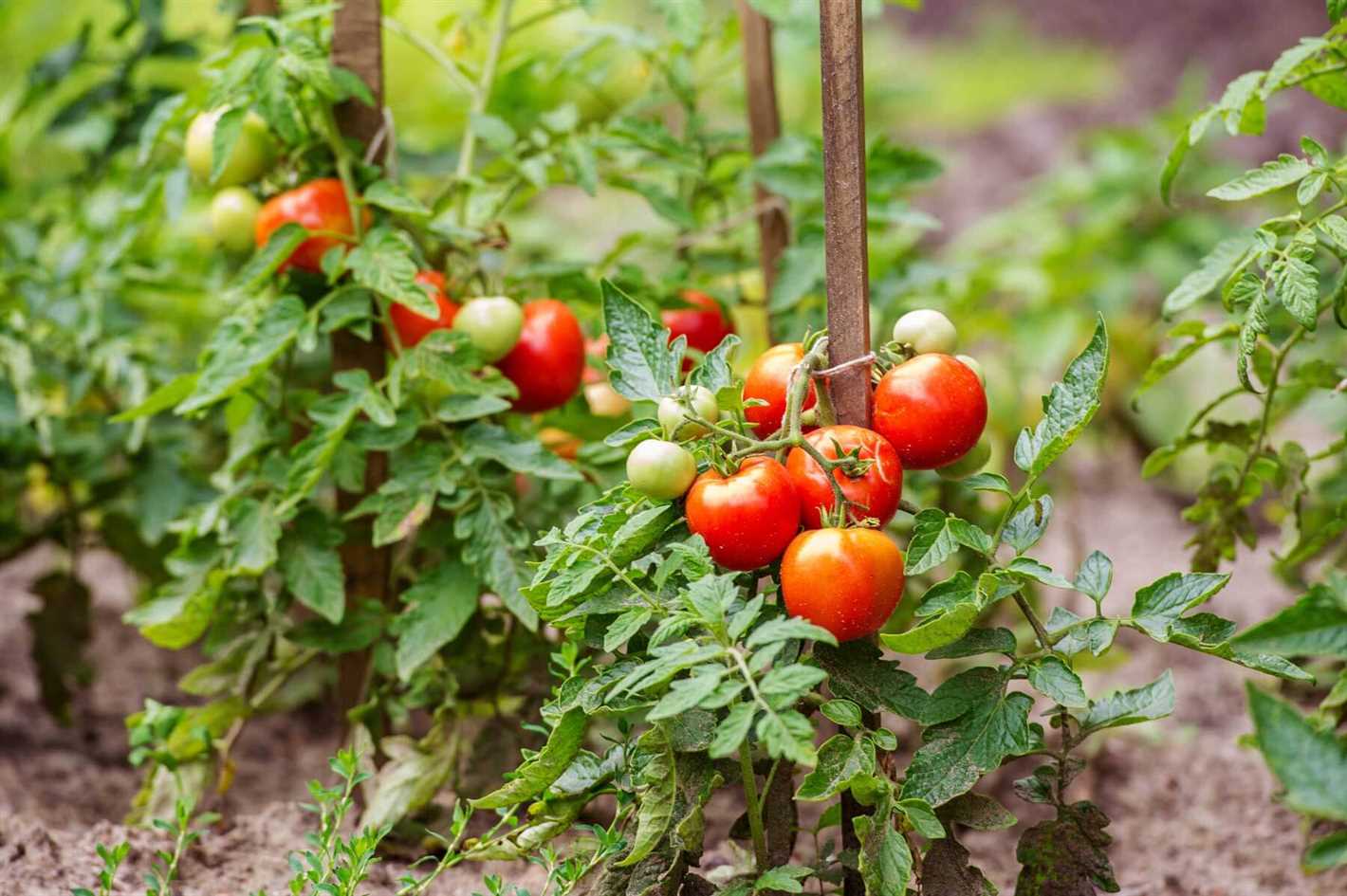
When it comes to growing tomatoes from seeds, sourcing quality seeds is crucial for a successful yield. Here are some tips on finding and selecting the best tomato seeds for your vegetable garden:
1. Seed catalogs
Seed catalogs are a great resource for finding a wide variety of tomato seeds. Many seed companies offer catalogs that provide detailed information about the different types of tomatoes they offer, including their characteristics, growing requirements, and flavor profiles. These catalogs can be ordered online or through mail and often provide a wealth of information to help you make an informed decision.
2. Local nurseries and garden centers
Visiting local nurseries and garden centers is another way to find quality tomato seeds. These establishments often carry a selection of seeds specifically suited for the local climate and growing conditions. Additionally, the staff at nurseries and garden centers can provide valuable advice and recommendations based on their experience with tomato varieties that thrive in the area.
3. Online seed suppliers
There are numerous online seed suppliers that offer a wide range of tomato seeds. These suppliers often provide customer reviews and ratings for the seeds they offer, allowing you to assess the quality and performance of different varieties. It’s important to read reviews and choose reputable suppliers to ensure reliable seeds.
4. Seed swaps and gardening communities
Participating in seed swaps or joining gardening communities can be a fun and cost-effective way to acquire tomato seeds. Seed swaps involve exchanging seeds with other gardeners, allowing you to try new varieties and connect with fellow gardening enthusiasts. Online gardening communities and forums also provide a platform for seed sharing and discussions, where experienced gardeners can offer advice and recommendations.
5. Saving seeds from previous harvests
Lastly, if you have successfully grown tomatoes before, you can save seeds from your previous harvests. This not only allows you to continue growing a variety that has thrived in your garden, but it also adds a personal touch to your vegetable garden. Be sure to select seeds from healthy and ripe tomatoes, properly dry and store them to ensure viability for future plantings.
Preparing Your Vegetable Garden for Tomato Seeds
Before planting tomato seeds in your vegetable garden, it is important to properly prepare the soil and create an environment that will promote healthy growth. Follow these steps to ensure your tomato plants have the best chance of success.
1. Choose the Right Location
Tomatoes thrive in full sunlight, so select a location in your garden that receives at least six to eight hours of direct sunlight each day. Additionally, choose a spot that has well-drained soil to prevent the roots from becoming waterlogged. If your garden has clay soil, consider amending it with organic matter such as compost or peat moss to improve its drainage.
2. Clear the Area
Before preparing the soil, clear the selected area of any weeds or debris. Remove any rocks, sticks, or other objects that could interfere with the growth of your tomato plants. Weeds can compete with young tomato seedlings for nutrients and water, so it is important to completely eradicate them from the planting site.
3. Test and Amend the Soil
Testing your soil’s pH level can help you determine if any amendments are needed. Most tomatoes prefer a slightly acidic soil with a pH level between 6.0 and 6.8. If your soil is too alkaline, add sulfur to lower the pH. If it is too acidic, add lime to raise the pH. Additionally, enrich the soil with organic matter such as compost or well-rotted manure to improve its texture and fertility.
4. Create Raised Beds or Rows
Consider creating raised beds or rows for your tomato plants. Raised beds provide good drainage, while rows can help organize the planting area and make it easier to tend to your plants. Both options also help prevent soil compaction, which can impede root growth.
5. Provide Support
Tomato plants grow best when supported by stakes, cages, or trellises. These structures not only help prevent the plants from collapsing under the weight of fruit, but they also promote airflow and reduce the risk of disease. Install your chosen support system before planting the tomato seeds to avoid damaging the young plants.
6. Clean and Sterilize Garden Tools
Before starting any new gardening project, it is a good idea to clean and sterilize your garden tools. Dirty tools can spread plant diseases and harmful bacteria. Scrub your tools with a mixture of water and dish soap, rinse them thoroughly, and then soak them in a diluted bleach solution for about 10 minutes. Rinse again and allow the tools to air dry before using them in the garden.
7. Plan for Watering
Tomato plants need consistent moisture, so it is important to plan for proper watering. Consider installing a drip irrigation system or soaker hoses to deliver water directly to the plants’ root zones. This is more efficient and can help reduce the risk of fungal diseases that can occur when the foliage remains wet for extended periods. If you prefer hand watering, make sure to water deeply and evenly.
By taking the time to properly prepare your vegetable garden for tomato seeds, you can set the stage for a successful and bountiful harvest. Follow these steps and your tomato plants will thank you with a delicious crop of homegrown tomatoes.
Selecting a Suitable Location
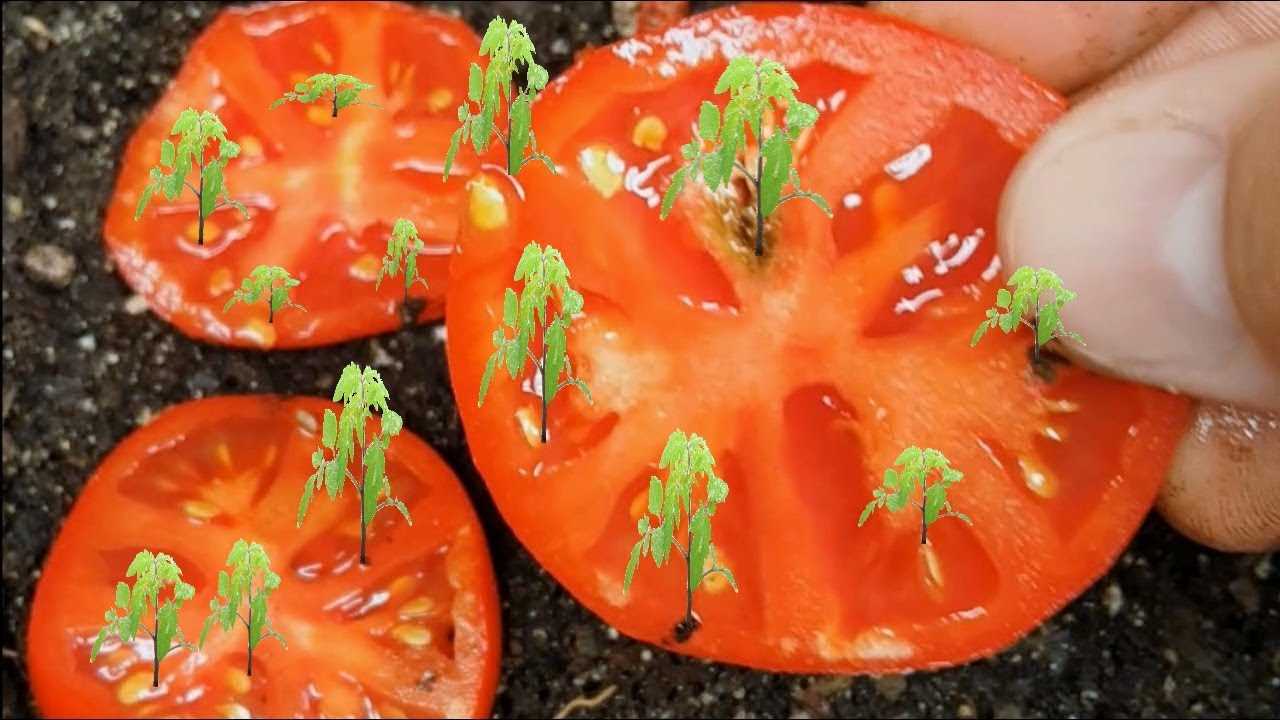
When it comes to growing tomatoes from seeds, selecting a suitable location for your vegetable garden is crucial for the success of your plants. Here are some factors to consider:
- Sunlight: Tomatoes thrive in full sunlight, so choose a location that receives at least 6 to 8 hours of direct sunlight each day. Avoid areas that are shaded by trees or buildings.
- Soil Quality: Tomatoes prefer well-draining soil that is rich in organic matter. Test the soil’s pH level to ensure it is between 6 and 7, which is the ideal range for tomato growth. If the soil is too acidic, add lime to raise the pH level.
- Water Drainage: Avoid low-lying areas or locations that have poor water drainage, as tomatoes are susceptible to root rot. Choose a spot that allows excess water to drain away easily.
- Proximity to Other Plants: Tomatoes can be affected by certain pests and diseases, so it’s important to avoid planting them near other nightshade family plants such as peppers, potatoes, and eggplants. Give them ample space to prevent the spread of diseases.
Consider these factors when selecting a suitable location for your tomato plants. A well-chosen spot will provide the optimal growing conditions for your tomatoes and result in healthy, productive plants.
“Question-Answer”
What is the best time to start growing tomatoes from seeds?
The best time to start growing tomatoes from seeds is about 6-8 weeks before the last expected frost in your area.
Can I use store-bought tomatoes for seed saving?
Store-bought tomatoes are often hybrid varieties and may not produce the same quality or characteristics when grown from saved seeds. It is recommended to use heirloom or open-pollinated varieties for seed saving.
What kind of soil should I use for planting tomato seeds?
Tomato seeds need a well-draining soil mix that is rich in organic matter. You can make your own mix by combining equal parts of compost, peat moss, and vermiculite or perlite.
How often should I water tomato seeds?
Tomato seeds should be kept consistently moist but not soaking wet. It is best to water them from below by placing the seed tray in a shallow tray of water and allowing the soil to absorb the moisture.
When can I transplant my tomato seedlings into the garden?
Tomato seedlings should be transplanted into the garden after the danger of frost has passed and the soil has warmed up. This is typically around 2-3 weeks after the last expected frost date in your area.







